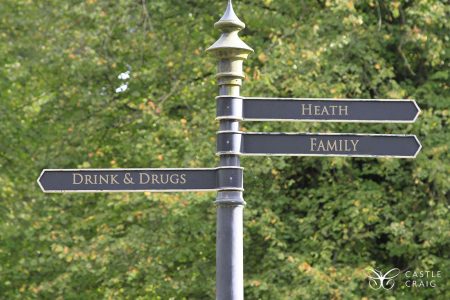Table of Contents
DMT, also known as dimethyltryptamine, is a potent psychedelic that has been utilised for generations in the traditional shamanic traditions of South American indigenous communities. However, its use is not without controversy.
It is a substance that occurs naturally and may be discovered in a variety of plants and animals, as well as being created by the body of a human being.
In recent years, DMT has acquired popularity as a recreational drug, and it is frequently used to generate profound and mystical experiences. This trend has resulted in increased availability of the substance.
But what exactly does DMT do to the brain, and what are the possible downsides and upsides of utilising this drug? This article will discuss the science of DMT, including its history, how it functions in the body, and the effects that it has on the brain.
What is DMT?
The psychedelic substance known as DMT is a member of the tryptamine chemical family. It is a white powder that has a crystalline appearance, and while it is commonly taken orally, it can also be smoked or injected to get the desired effect.
When taken orally, DMT causes hallucinations that are both intense and powerful, and they can last anywhere from thirty minutes to several hours at a time.
It is not completely clear how DMT creates these effects; nevertheless, it is believed to work by interacting with serotonin receptors in the brain. The specific methods by which DMT produces these effects are not fully understood.

Discover How We Can Help You
DMT: A Brief History
DMT has a long history of use in the traditional shamanic traditions of South America, where it is frequently eaten as a tea known as ayahuasca. These activities date back several centuries.
There is evidence that people have been consuming ayahuasca for religious and therapeutic purposes for hundreds or perhaps thousands of years. DMT can also be found in a variety of plants, such as Acacia, Mimosa, and Psychotria, to name a few of them specifically.
In 1931, it was first synthesised, and in the 1950s, researchers first reported the psychotropic properties of the substance. DMT first became widely used as a recreational drug in the 1960s, and ever since then, individuals all over the world have sought out this substance for the strong and life-altering effects it imparts.
What Function Does DMT Serve Within the Body?
DMT is a substance that can be found in nature and is generated by a variety of organisms, including the human body, in addition to plants and animals.
It has been discovered in the fluids and tissues of a variety of animals, including humans, and can be detected in mammalian brains in trace amounts. Other species, including humans, also contain it.
DMT is hypothesised to have a function in the body that is related to the regulation of sleep, as well as pain and mood. It is also thought to play a role in the regulation of the immune system, and it may have therapeutic promise as an anti-inflammatory medication. Both of these hypotheses are now under investigation.
Where Does DMT Act in the Brain?
DMT has an effect on the serotonin receptors in the brain, which are engaged in a variety of critical functions such as perception, cognition, and mood.
When DMT binds to these receptors, it has the potential to generate a variety of effects, such as hallucinations, altered states of consciousness, as well as alterations in mood and cognitive ability.
It is assumed that DMT is especially active in the prefrontal cortex of the brain, which is the region of the brain that is responsible for executive function and decision-making.
Contact Us Today
Your path to lasting recovery starts here
Is DMT Addictive?
At this time, there is no evidence to suggest that DMT can cause physical dependence (withdrawal symptoms) or psychological addiction.
On the other hand, similar to other psychedelics, DMT might cause psychological dependence in certain individuals. This indicates that people using the substance may develop a psychological reliance on it and may have an intense urge to continue doing so in order to attain the desired results.
When people take DMT in this manner, they run the risk of becoming physically and psychologically dependent on DMT as well as other hallucinogens.
According to the limited research that has been done on the subject of DMT dependence, people who use the substance regularly may acquire a craving for it and go through periods of psychological suffering when they are unable to use it.
It is more likely that someone who develops a habit of using DMT would suffer the repercussions of it on their health. Taking higher and more frequent dosages of the drug, gathering supplies of it, and spending more money on it are all behaviours that show addiction to DMT.
Effects of DMT
The effects of DMT can be rather severe and strong, but they also tend to be somewhat variable from one individual to another. The following are some of the common effects of DMT:
- Hallucinations are something that can be induced by DMT, and they can be quite vivid and realistic. They can also include visual and audio distortions.
- Altered consciousness: DMT can create a shift in consciousness, which might include a feeling of detachment from the body and the surroundings around the user. This can be a very intense experience.
- Changes in mood and cognition: DMT is known to create changes in mood, such as euphoria, awe, or mystical experiences. It can also produce changes in cognition, which can include changes in a person’s experience of time as well as changes in the way that a person processes and understands information.
- Spiritual experiences: many persons who use DMT claim to have had deep spiritual experiences, such as feelings of enlightenment and a sense of oneness with the cosmos, as a result of their use of the substance.
Side Effects of DMT
DMT, like other psychedelics, has the potential to cause a number of adverse consequences, including the following:
- When consuming DMT, some people report experiencing nausea and vomiting, and others report feeling discomfort in the stomach.
- DMT has been shown to cause an increase in heart rate, which may be cause for concern for people who already have heart issues.
- DMT has also been linked to a rise in blood pressure, which is another side effect of using the drug.
- Anxiety and agitation are two sentiments that may be triggered by the use of DMT, particularly in individuals who are predisposed to experience these states of mind.
- After using DMT, some people report having flashbacks, which are the spontaneous repeat of experiences that were generated by the substance. These flashbacks might occur days or weeks afterwards.
DMT Withdrawal Symptoms
DMT does not induce major withdrawal symptoms when use is discontinued, and it does not produce any physical dependence or addiction. However, after using DMT, some people may experience psychological problems, such as feelings of depression or worry. This can be the case for some people.

DMT vs LSD – What’s the Difference?
Both DMT and LSD are classes of psychedelic drugs that have the potential to cause users to have hallucinations and experience altered states of consciousness. On the other hand, there are a few significant distinctions between the two drugs:
- The duration of effects: in general, the effects of DMT last for a significantly shorter period of time than those of LSD. The effects that are produced by DMT normally last anywhere from 30 minutes to several hours, whereas the effects that are produced by LSD can continue for up to 12 hours.
- The hallucinogenic effect of DMT is far stronger than that of LSD. In most cases, a small dose of DMT is all that is required to create powerful effects, but a higher amount of LSD is often required to achieve the same results.
- Chemical structure: DMT and LSD are two hallucinogens that interact with the brain’s receptors in very different ways due to their distinct chemical structures.
DMT vs. Ayahuasca
Ayahuasca is a traditional form of shamanic medicine that is used in South American countries and is known to include DMT as its active component.
The effects that are produced by the combination of DMT and other substances in ayahuasca when it is consumed are extremely potent and long-lasting, and they are very different from the effects that are produced by DMT taken by itself.
Ayahuasca is most commonly consumed in a ceremonial setting and is linked to a variety of enlightening and transformative spiritual experiences.
DMT Interaction with Other Drugs
DMT has the potential to have an adverse reaction when used with a wide variety of other pharmaceuticals, such as antidepressants, monoamine oxidase inhibitors (MAOIs), and stimulants.
It is essential to have an awareness of these interactions and to eschew the use of DMT in conjunction with the aforementioned substances.
DMT Detox
DMT does not cause any physical dependence and does not call for any kind of detoxification procedure. Those who are worried about their use of DMT, on the other hand, may benefit from receiving support from a mental health professional or through a support group.
Where to Look for Assistance
There are a variety of options available to assist you or someone you know who is battling issues related to their use of DMT or is concerned about their mental health. It may be helpful to seek counsel and assistance from your GP, a mental health professional or a support group.
Even though DMT does not produce a physical dependence on users, its usage can still be hazardous or dangerous, and this fact should be kept in mind. DMT, like any other drug, has the potential to generate undesirable side effects, and research suggests that using it may be related to a variety of risks to both one’s physical and mental health.
There is a possibility that certain individuals are more susceptible to the effects of DMT and are more likely to develop adverse responses. In addition, persons who already have specific medical illnesses, such as cardiac difficulties or mental health disorders, are at an increased risk of negative outcomes if they use DMT.
It is also important to be aware that the legal standing of DMT differs greatly from country to country. In many countries, DMT is considered a controlled substance, which means that it is against the law to possess the substance, to use it, or to distribute it. In some other nations, DMT use for specific medical or religious objectives is sanctioned by the law. It is vital to be aware of the legal state of DMT in your country and to obey any relevant rules and regulations. It is also necessary to be aware of the legal status of DMT in your country.





Conclusion
In conclusion, DMT is a potent and controversial psychedelic chemical that has been utilised for ages in the conventional shamanic traditions of South American indigenous communities. It is a material that is created by the human body and is also found in certain plants and animals. It is a natural substance that occurs in the world. When taken orally, DMT causes hallucinations that are both strong and powerful, and these effects can endure for several hours at a time. Even while there is some evidence to suggest that DMT may have therapeutic potential, the use of this substance is also associated with a variety of hazards to both one’s physical and mental health. It is essential to have an understanding of these dangers and to approach the consumption of DMT with extreme caution.
DISCLAIMER
The information in this article is intended for educational purposes only and does not constitute medical advice. DMT is a powerful and potentially risky drug, and its use should be approached with caution. The effects of DMT can vary significantly from person to person, and its use may be associated with a range of physical and mental health risks. If you are considering using DMT or have concerns about your mental health, it is important to seek guidance from a qualified medical professional. The legal status of DMT varies around the world, and it is important to be aware of and follow the relevant laws and regulations in your country.
References
- Lancelotta RL, Davis AK. Use of Benefit Enhancement Strategies among 5-Methoxy-N, N-Dimethyltryptamine (5-MeO-DMT) Users: Associations with Mystical, Challenging, and Enduring Effects. J Psychoactive Drugs. 2020 Jul-Aug;52(3):273-281. doi: https://doi.org/10.1080/02791072.2020.1737763
- MedicalNewsToday, “Everything you need to know about DMT“, Link: https://www.medicalnewstoday.com/articles/306889
- DMT. Talk to Frank.com. (n.d.). Retrieved January 5, 2023, from https://www.talktofrank.com/drug/dimethyltryptamine
- DMT. (2022, April 16). DrugWise. https://www.drugwise.org.uk/dmt/
- Carbonaro TM, Gatch MB. Neuropharmacology of N, N-dimethyltryptamine. Brain Res Bull. 2016 Sep;126(Pt 1):74-88. doi: https://doi.org/10.1016/j.brainresbull.2016.04.016
- Lowe H, Toyang N, Steele B, Grant J, Ali A, Gordon L, Ngwa W. Psychedelics: Alternative and Potential Therapeutic Options for Treating Mood and Anxiety Disorders. Molecules. 2022 Apr 14;27(8):2520. doi: https://doi.org/10.3390/molecules27082520
- National Institute of Drug Abuse, Research Report Series: HALLUCINOGENS AND DISSOCIATIVE DRUGS Including LSD, Psilocybin, Peyote, DMT, Ayahuasca, PCP, Ketamine, Dextromethorphan, and Salvia.

